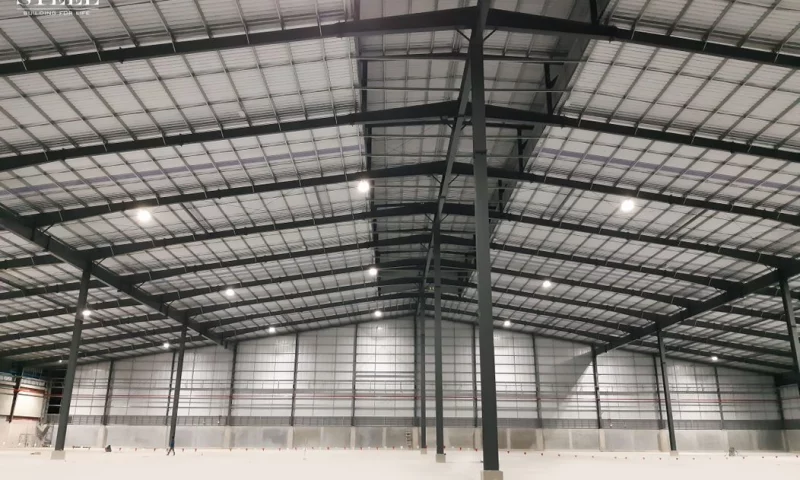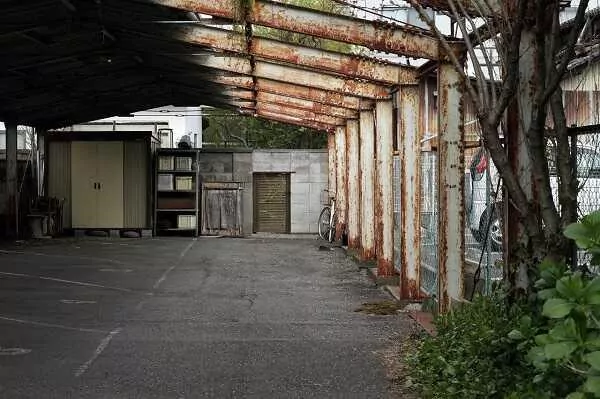Pre-engineered buildings (PEBs) are a popular choice for various construction projects due to their cost-effectiveness and versatility. However, to maximize their efficiency and comfort, proper insulation is crucial. This guide delves into the importance of insulating PEBs, exploring common insulation materials and their benefits.
What Are Pre-Engineered Buildings (PEBs)?
Pre-engineered buildings (PEBs) are innovative structures designed with pre-fabricated components, assembled efficiently on-site. These buildings are widely used for warehouses, factories, commercial complexes, and more, offering cost-effective, durable, and versatile construction solutions. PEBs are known for their flexibility in design, shorter construction timelines, and reduced labor costs, making them a preferred choice for modern infrastructure.

Pre-engineered buildings (PEBs) are innovative structures designed with pre-fabricated components
Importance of Insulation in PEBs
Insulating pre-engineered buildings is critical to optimizing their performance. These metal structures are particularly susceptible to heat transfer, condensation, and energy loss without proper insulation. Effective insulation enhances thermal performance, reduces operational costs, and ensures a comfortable indoor environment. By controlling temperature fluctuations, insulation minimizes wear and tear, ultimately increasing the longevity of the building.
Overview of Common Insulation Materials for PEBs
Various materials are available for insulating PEBs, each with unique properties suited to specific applications. Fiberglass, rock wool, spray foam, and reflective foil are among the most popular choices. These materials cater to diverse needs, from temperature regulation to soundproofing, and are selected based on factors such as climate, building usage, and budget.

Various materials are available for insulating PEBs, each with unique properties suited to specific applications
Benefits of Insulating Pre-Engineered Buildings
Insulating pre-engineered buildings (PEBs) offers numerous benefits that enhance their overall performance and longevity. One of the primary advantages is improved energy efficiency, which leads to reduced operational costs by minimizing the need for heating and cooling.
Energy Efficiency and Reduced Operational Costs
Insulating PEBs significantly reduces energy consumption by preventing heat loss during winter and heat gain in summer. This improved thermal regulation cuts down heating and cooling costs, leading to substantial savings on energy bills.

Insulating PEBs significantly reduces energy consumption by preventing heat loss during winter and heat gain in summer
Enhanced Occupant Comfort and Temperature Regulation
With proper insulation, PEBs maintain stable internal temperatures, ensuring comfort for occupants regardless of external weather conditions. This is especially beneficial for workplaces and commercial spaces where consistent temperatures are essential.
Moisture Control and Longevity of Structures
Insulation serves as a barrier against moisture, preventing condensation that can corrode metal structures. By minimizing water infiltration, insulation enhances the durability and lifespan of pre-engineered buildings.
Types of Insulation Materials Used in PEBs
Pre-engineered buildings (PEBs) can be insulated using a variety of materials, each offering unique benefits. Fiberglass insulation is a popular choice due to its affordability and excellent thermal performance.
Fiberglass Insulation
Fiberglass insulation is a cost-effective and widely used solution for PEBs. It offers excellent thermal resistance and is easy to install. Additionally, fiberglass is resistant to moisture and pests, making it a durable option for various applications.

Fiberglass insulation is a cost-effective and widely used solution for PEBs
Rockwool Insulation
Rock wool, made from volcanic rock, provides superior fire resistance and soundproofing capabilities. This material is ideal for industrial and commercial settings where safety and noise reduction are priorities.
Spray Foam Insulation
Spray foam insulation creates an airtight seal and delivers a high R-value, ensuring exceptional thermal performance. It is particularly suitable for insulating hard-to-reach areas and irregular surfaces within PEBs.
Reflective Foil Insulation
Reflective foil insulation is lightweight and effective in reflecting radiant heat. Often used in conjunction with other materials, it is an excellent choice for PEBs located in hot climates where minimizing heat gain is crucial.

Reflective foil insulation is lightweight and effective in reflecting radiant heat
Key Factors to Consider When Choosing Insulation
When selecting insulation for pre-engineered buildings, several key factors must be considered to ensure optimal performance and longevity.
R-Value and Thermal Resistance
The R-value is a critical measure of an insulation material’s effectiveness in resisting heat flow. Higher R-values indicate better thermal performance, which is essential for energy efficiency in PEBs.
Durability and Weather Resistance
Insulation materials must be durable and able to withstand local weather conditions, including extreme temperatures, humidity, and exposure to pests. Durable insulation reduces maintenance costs and extends the building’s life.

Insulation materials must be durable and able to withstand local weather conditions
Environmental and Cost Considerations
Eco-friendly insulation materials not only reduce environmental impact but may also qualify for green building certifications. Balancing upfront costs with long-term energy savings is key when selecting the right insulation.
Installation Techniques for PEB Insulation
Proper installation techniques are essential for maximizing the effectiveness of insulation in pre-engineered buildings (PEBs). Whether retrofitting an existing structure or working on new construction, it’s important to follow a step-by-step process to ensure thorough coverage and adherence to safety standards.
Retrofitting vs. New Construction
Insulation can be added to existing PEBs (retrofitting) or integrated during the construction phase of new buildings. Retrofitting is ideal for improving older structures, while new construction offers more streamlined insulation options.
Step-by-Step Process for Installing Insulation
1. Assess the Building’s Needs: Determine insulation requirements based on climate, usage, and budget.
2. Select the Material: Choose an insulation type that aligns with your goals, such as fiberglass for affordability or spray foam for maximum thermal performance.
3. Prepare the Structure: Clean surfaces, seal gaps, and repair damages to create a suitable foundation for insulation.
4. Install Insulation: Place panels, apply spray foam, or attach reflective layers following manufacturer guidelines.
5. Secure Materials: Use adhesives, fasteners, or vapor barriers to keep insulation in place.
6. Inspect and Finalize: Check for gaps or thermal bridges and address any issues to ensure optimal performance.

Insulation can be added to existing PEBs (retrofitting) or integrated during the construction phase of new buildings
Common Mistakes to Avoid During Installation
– Skipping Preparation: Neglecting surface cleaning or sealing can compromise insulation effectiveness.
– Improper Material Choice: Using materials unsuited to local climate or building type can lead to inefficiencies.
– Overlooking Sealing: Failure to seal edges and joints results in thermal bridging and energy loss.
Pre-engineered building insulation is a critical component for enhancing energy efficiency, reducing costs, and ensuring the durability of PEBs. By selecting the right materials and following best practices during installation, you can transform a PEB into a high-performing, sustainable structure.
Whether you’re retrofitting an existing building or working on new construction, insulation is a valuable investment that pays off in the long term. Take the next step today to optimize your PEB’s insulation and reap the benefits of comfort, efficiency, and cost savings.
For comprehensive solutions in pre-engineered building, please contact Pebsteel via email at [email protected] or phone at (+84) 908 883 531 for immediate assistance!












